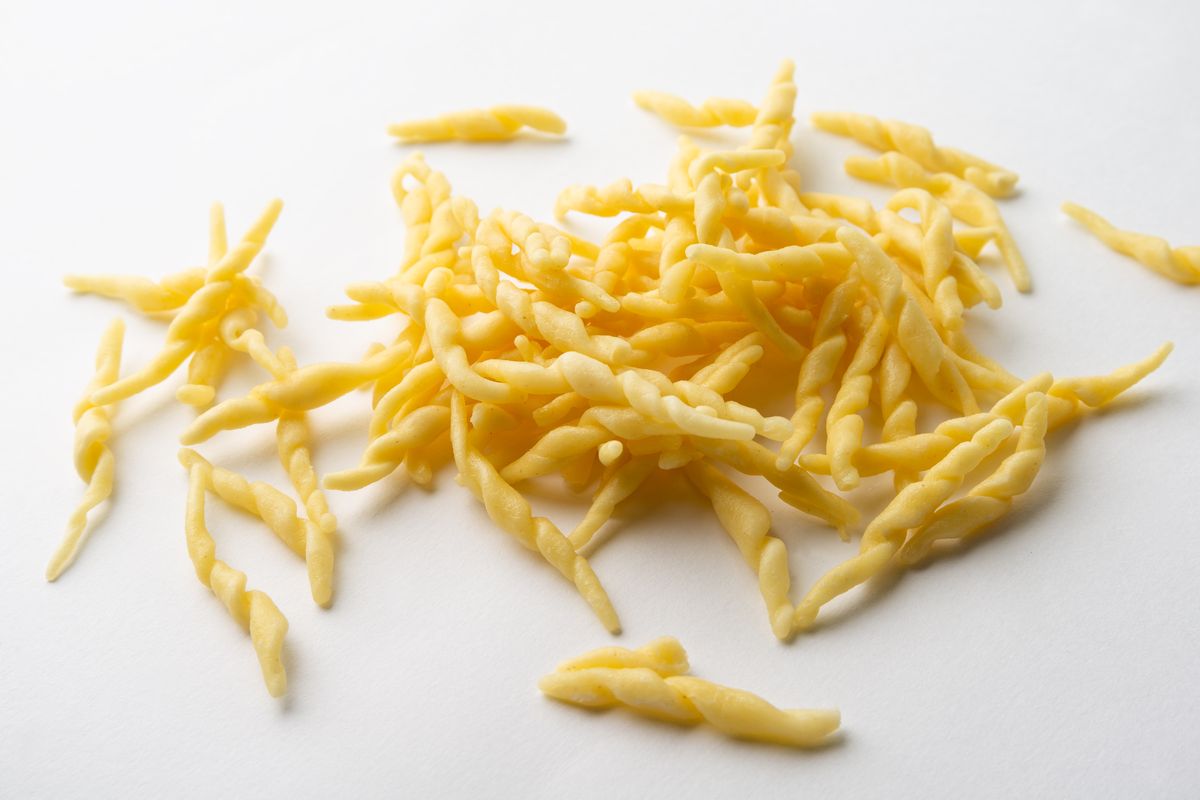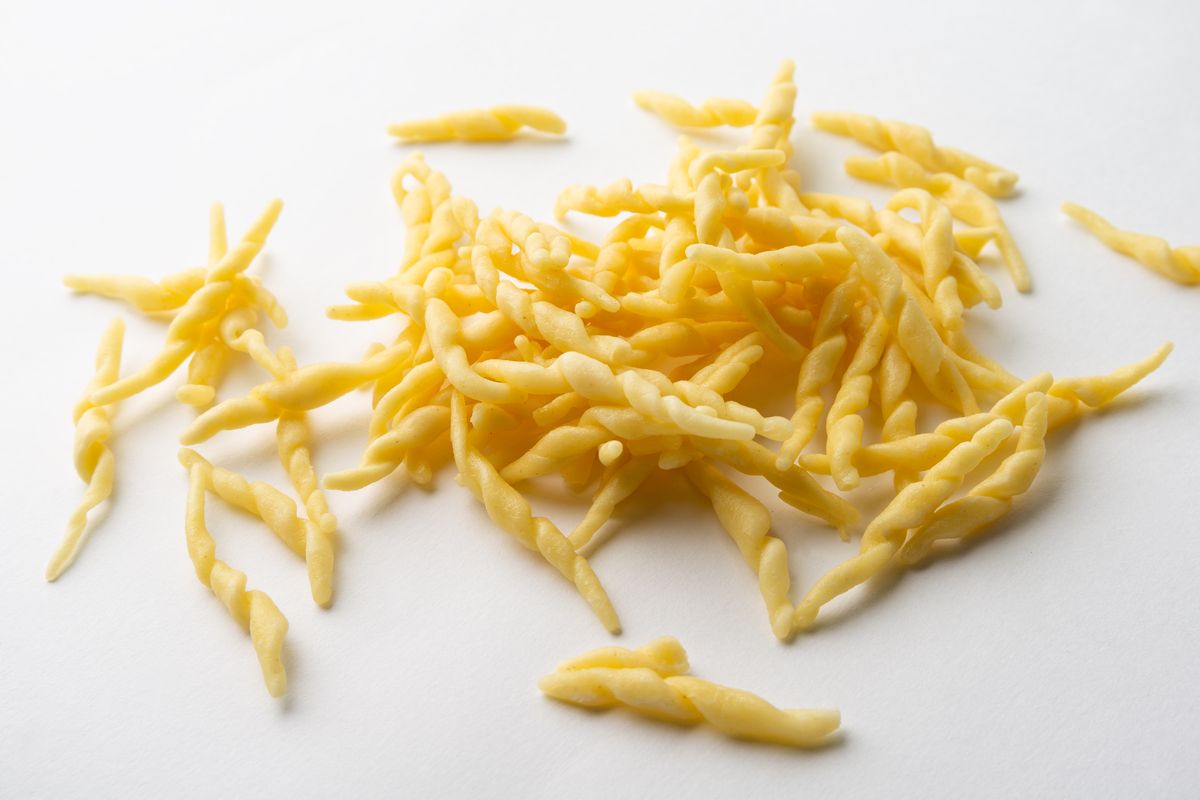Recipes
Homemade trofie


Durum wheat semolina, water and salt: these are the ingredients necessary to prepare trofie, the traditional pasta of Ligurian cuisine.
Trofie are a type of pasta typical of Liguria but also widespread in the neighboring areas of Piedmont. They have a twisted shape of about 4 cm in length which resembles that of a corkscrew. To make homemade trofie you need a minimum of manual skill but you will see that, with a little practice, you will gradually improve.
The condiment par excellence for trofie is Genoese pesto. However, this format of fresh pasta has conquered almost the entire peninsula, appearing from time to time in many recipes. Let's see how to prepare them using only re-milled semolina and water, as tradition dictates, and some ideas for seasoning them.

Preparation
How to prepare homemade trofie
Start by placing the flour in a large bowl with the salt , add the water a little at a time while kneading. Knead with your hands until you obtain a compact and firm dough. Cover with a clean cloth and leave to rest for 30 minutes .
Take a small piece of dough, form a ball the size of a peanut, place it under your index finger and roll it under the palm of your hand, pulling it towards you. Moving your hand in the opposite direction, give the twisted shape using only the external part of the hand itself. Continue in this way until you run out of dough.
You can cook the homemade trofie immediately, in plenty of salted water for 2-3 minutes , or leave them to air dry for a few hours.
Here is a video that shows the movement to make with the palm of the hand to obtain the characteristic shape.
This pasta format, in addition to the aforementioned Genoese pesto , is excellent with walnut sauce , another pride of Ligurian cuisine. Moving away a little from tradition, we recommend you try the trofie with courgettes and prawns, with speck and walnuts or the delicious baked variant.
Origin and history
The origin of trofie is quite humble. They were born in the homes of housewives in the Ligurian hinterland who prepared them with a particular knitting needle ( bicela , or buffet) and then sold them. In a short time, demand increased to the point that in Sori, a town in the Golfo Paradiso, the first machine for producing trofie was invented in 1977 . It was born from the inventive genius of a certain Bacci Cavassa and the first to own the machinery was the Novella pasta factory.
Since 2019 , Sori's trofie have been able to boast the De.Co. brand. , a municipal denomination of origin and in the town, since 1985, a festival dedicated to this product has been held every year.
The name (they can be found both as trofie, larger, and as trofiette, smaller and tapered) has an uncertain etymology. It could derive either from two ancient Greek terms, trophe (nourishment) or trépho (twist) or from the Genoese strafuggià , meaning to rub. In the Battisti e Alessio etymological dictionary, however, the link with trompho is underlined.
In all cases we are talking about a twisted pasta shape (a bit like fusilli) which is pleasantly called risso da baché or chip. Even in Sardinia there is a recipe that sees them as protagonists. They are the truffiette of Carloforte , a municipality in Sulcis which boasts a massive Ligurian presence.
Riproduzione riservata © - WT












